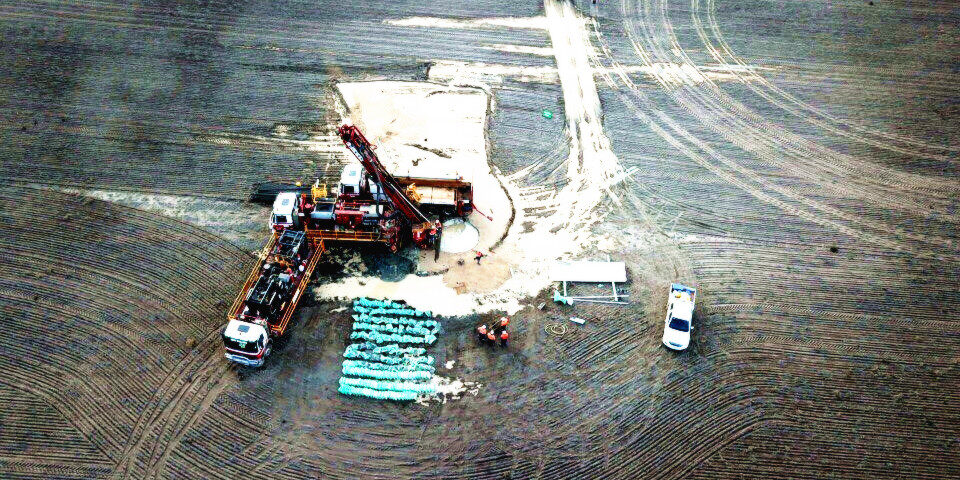RC - Reverse Circulation Drilling

Reverse Circulation Drilling was invented in Kalgoorlie, Western Australia in the mid 20th Century. Traditional open-hole drilling was proving difficult in soft iron ore and mineral sands. The first specific drill pipes were developed by 1972 and the first RC hammer was created in 1990 as a way to deliver cleaner cutting samples. The 1990’s saw high pressure boosters added to the drilling method as a way to boost performance and improve penetration rates. The result was reduced costs for miners. This reduction in cost has resulted in RC drilling become one of the most cost effective drilling methods available.
When choosing a drilling method, especially for exploration and grade control, one must consider many factors such as cost, time, environmental impact, depth of drilling and sample quality. Reverse Circulation drilling offers many advantages over other drilling methods, such as Rotary Air Blast drilling or diamond drilling.
What is Reverse Circulation Drilling?
Reverse Circulation drilling, or RC drilling, is one of the most popular methods of mineral exploration drilling. This guide will give you an introduction to RC drilling.
We will be covering:
- The Basics of Reverse Circulation Drilling
- The Cost of RC Drilling
- Reverse Circulation Drill Rigs
- How does RC Drilling Work?
The Basics of Reverse Circulation Drilling
RC drilling uses rods with inner and outer tubes, the drill cuttings are returned to the surface inside the rods. The drilling mechanism is a pneumatic reciprocating piston known as a hammer that drives a tungsten-steel drill bit.
The Cost of RC Drilling
Reverse Circulation drilling can be among the cheapest forms of surface drilling. It is generally slower and more costly than Rotary Drilling however it has better penetration. It is generally cheaper than Diamond Core Drilling and is preferred for most mineral exploration work.
Reverse Circulation Drill Rigs
RC Drilling utilises much larger rigs and machinery and depths of up to 500 metres are routinely achieved. RC drilling ideally produces dry rock chips, as large air compressors dry the rock out ahead of the advancing drill bit.
How does RC Drilling Work?
Method
Compressed air is blown through the annulus of the drill rod. The differential pressure creates air lift of the water and cuttings up the inner tube which is inside each drill rod. This reaches the deflector box at the top of the drill string then moves through a sample collection hose which is attached to the top of the cyclone.
Internal Workings
The drill cuttings travel around the inside of the cyclone until they fall through an opening at the bottom and are collected in a sample bag. For and drill hole there will be a large amount of sample bags, each one is marked to record the location and drilling depth that the sample was obtained from.
Assays
The collected series of sample bag cuttings are later taken for analysis to determine the mineral composition of the drill hole. The analysis results of each individual bag represents the mineral composition at a particular sample point in the drill hole. Geologists can then survey the drilled ground analysis and make decisions about the value of the overall mineral deposit.
Conclusion
Since its inception in the early 1970’s in Australia, RC drilling has become a preferred method for initial exploration and grade control due to its many advantages:
- The samples extracted by RC drilling are reliable and free from contaminants.
- The method is timely and cost efficient.
- It is well suited to difficult terrains.
- It has high penetration rates
- It has minimal environmental impact.

